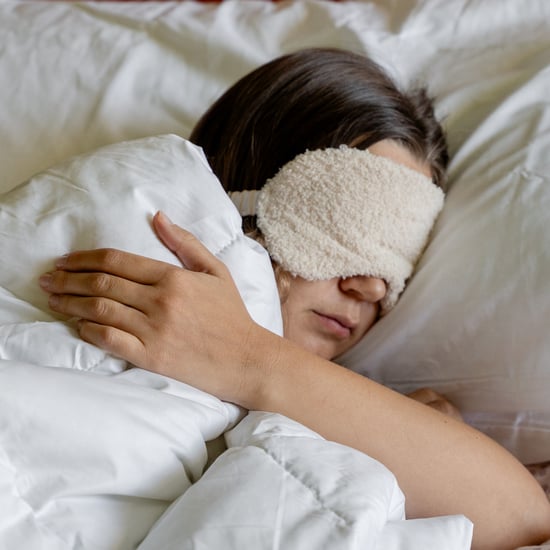Glimmers Are the Opposite of Triggers
Glimmers Are the Opposite of Triggers and Can Make Us Happier, Here’s How to Find Them

You just need a quick scroll on social media to feel like the world is a troubling place right now. While we've all heard of triggers – those moments that catch you by surprise and send your body into fight or flight mode – you are less likely to know about trigger's sibling: glimmers.
The term was coined by Deb Dana, a licensed clinical social worker who specialises in complex trauma, in her 2018 book "The Polycvagal Theory in Therapy" when she identified the small micro moments of joy that lead our bodies to experience feelings of connection, calm, and joy. While the word conjures up images of faint, fleeting light, you'd be forgiven for thinking that they are hard to come by, but in actuality, glimmers are all around us – you just need to tune into them.
While there's little doubt we could all do with coming across our own personal glimmers as often as possible, just how beneficial are they? How do glimmers differ from triggers? And, most importantly, how do we find them? We speak to trauma-informed integrative therapist Abby Rawlinson, author of "Reclaiming You" which is available to pre-order now, for more information on glimmers, and why they are so important.
What Are Glimmers?
"Glimmers are the people, places, and experiences that regulate our nervous system," Rawlinson says. Essentially, glimmers are the small moments that might strike you during the day that give a sense of calm, happiness, and appreciation. While they may sound superficial, they actually activate a physical response in our bodies that can help us feel calmer.
"Glimmers activate a part of the body called the vagus nerve; this is known as the 'care-taking', or wandering nerve," Rawlinson continues. "Vagus is the Latin word for wondering. The vagus nerve begins in the core of the brain and wanders all the way into the gut – it is responsible for getting us back into a regulated state where we feel calm, focused, and at ease."
While big, sweeping occasions might provoke happiness, there is a lot to be said for tapping into these small moments of joy. Sometimes these can spark recollection and remind us of a time we felt safe, while other times it's about tuning into the passing things that make us smile.
"Glimmers shift our nervous system into a regulated state," says Rawlinson. "When we are regulated, we feel positive and life feels manageable. We can be productive and creative, and we feel capable of handling whatever comes our way. Being regulated can feel like having a general sense of 'everything is ok' – we trust others and the world around us."
What Are the Differences Between Triggers and Glimmers?
"Glimmers have the opposite effect of triggers. Rather than triggering the nervous system's survival responses, glimmers incite a sense of calm and relaxation. They return us to a state of homeostasis, where our system is balanced and regulated," Rawlinson explains.
Where triggers often stimulate a recollection of a previous traumatic experience, glimmers have the ability to help us recall times of joy and happiness, too.
How to Find Your Glimmers
It's not always easy to find your personal glimmers; they are individual to you so there's no one-size-fits-all approach. Our nervous systems are conditioned to look for threats rather than moments of safety and "the sensations we feel when we are regulated can also be more subtle than those when we are in a dysregulated state," Rawlinson adds.
It's key to start paying conscious attention to what makes you feel at ease. Take stock and pause when you feel a sense of calm and look at what has made you feel this way. "Ask yourself: What activities make me feel nourished and relaxed? Who makes me feel safe and accepted? Which places make me feel happy and at peace?" Rawlinson says.
Glimmers also fall into two categories, she explains: self-regulating glimmers and co-regulating glimmers. "Self-regulating glimmers are the things you can do on your own to bring yourself into regulation. For example, reading, creating, walking in nature, yoga, or a bath. Co-regulating glimmers are the things you do with others to come into regulation. For example, laughing with a friend, talking to a therapist, having a deep conversation with your partner, or cuddling a pet."
It's often that we lump our day into one category: a good or bad day. But this is rarely the case. Our lives are full of ups and downs that can undulate throughout the month, week, day, or even within the hour. Glimmers are the many micro ups that occur. They can be as small as hearing your favourite song on the radio, making a cup of tea, or lighting a candle.
Try to keep note of your glimmers in one place so you can look back at them to help you reach them more easily when feeling anxious or disconnected. Tuning into them and trying to access or create more glimmers when you need them can help achieve a calmer state of mind.
Tips for Seeking Out More Glimmers at Times of Unease
Rawlinson recommends trying to experience more awe. "We feel awe when we encounter something with qualities so extraordinary it seems incomprehensible: the birth of a child, a mind-blowing concert, a beautiful sunset. Not only do moments of awe shift our attention away from ourselves and trigger a deep sense of appreciation, they have the ability to move our nervous system from a dysregulated state, where we feel anxious, angry, or hopeless, to a more regulated state, where we feel happy, present and at ease," she says.
Although you don't need to make big lavish holidays or commit to once-in-a-lifetime trips to experience awe. "Awe can also be found in everyday experiences: listening to powerful music, noticing the beauty of nature, connecting with impressive people or stories, or listening to inspiring speeches."






